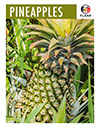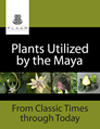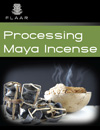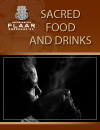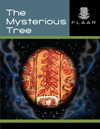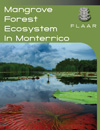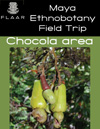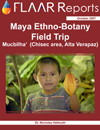Classic period through today
Nicholas Hellmuth
Introduction to Rubber Usage by the Maya
In part because of my interest in the Classic Maya ballgames, and in part because of my research on the Cholti Lacandon in the Archivo General de Indias (Sevilla, in 1971) and my research in the main archives of Colonial Guatemala (in Guatemala City, in Zona 1 in the 1970's), I have continued this ethnohistorical line of research with ethnobotanical study of rubber trees in Guatemala.
This is a long range project, so this web page can be considered more a literal introduction and progress report. We are presently building up a bibliography as well as documenting where indigenous rubber trees can be found.
All of this work is in cooperation with Guatemalan biologists who are trained in Guatemalan universities. Local botanists tend to know their country quite well.
General situation of rubber for the Maya and Aztec
Rubber today is produced primarily by a tree that originally grew in Brazil, Hevea brasiliensis. Presently thousands of acres in the coffee and cacao-growing areas of piedmont Guatemala, from Mazatenango through towards the border of Mexico, are planted with stands of these Brazilian rubber trees. Thus I was pleasantly surprised to find that native Guatemalan rubber trees still grow wild in the same area (but are not grown in plantations).
The indigenous rubber tree of Mesoamerica is more likely from Castilla elastica, from the Moraceae: Mulberry Family. Other members of this family include Ficus sp (fig trees), Brosimum utile & Brosimum alicastrum (the edible ramon (breadnut), an important tree for the Classic Maya), and mulberry itself.
Habitat of rubber in the Mayan area of Mesoamerican
The rubber tree grows from the south part of Mexico through most of Guatemala, Belize and down to Costa Rica. I would not expect to find rubber trees in a dry area such as the Yucatan, but would in moist portions of the state of Chiapas, for example, and obviously in Veracruz. Of course rubber was widely traded to supply latex for the ballgames of pre-Columbian Mesoamerica. Aguirre states that “In Guatemala, the name of the river Ulapa means, “River of Rubber Trees.” (2007:176). However it is not easy to find where this river is on the Internet.
I was shown many native rubber trees in the nature reserve parallel to the Rio San Pedro Martyr between the area of the ruins of El Peru and the biology research station Las Guacamayas (half hour from Paso Caballos, Peten, by boat).
Practical uses by the Mayas, other than for ballgame balls
Incense rituals also included rubber. The Lacandon burn rubber figurines (check any comprehensive ethnohistorical or ethnographic publication on the Lacandon). In other cases the rubber was mixed with copal or rubber was used, perhaps because it was flammable. I have not yet burned native rubber to ascertain what kind of smell it has, but it would have been mixed with so many other plant substances that I doubt it had an odor of burning tires. Besides, most priests would tend to be in at least partial trance, as well as under the influence of at least balche and potentially more potent plant extracts as well. And the diverse normal incense smell would mix with that of rubber in any event.
Here are some cittions that Teijgeler has cited from various ethnographic studies, but there are plenty more, including from the work of Coggins and Ladd on offerings in the Cenote of Chichen Itza.
The tapa tribute comes folded, rolled up in bundles,
tipped with rubber and copal incense for burning.
…offerings of bark cloth, incense boards, and rubber figures (Teijgeler 2006:2)
Rubber ballgame balls in Mayan sculpture
The best known use of rubber in pre-Columbian Mesoamerica was to make the balls for the diverse games. Rubber balls are used at least as early as the Olmec, as found in El Manati. Of course Mesoamerican scholars and ethnobotanists realize that the balls were not pure rubber. Considerable work has been done in Mexico on working out the recipes and step by step production of game balls. One recipe is provided in the bibliography at the end.
These balls came in all sizes, depending on which game was played. Some balls were the size to fit in your hand. Most balls were large enough to encase a human skull. The balls for post-game sacrifices at Yaxchilan were huge. For sure the Classic Maya, with over a thousand years experience with rubber, and that based on another thousand years of Preclassic experience that the Maya inheritated, surely the Maya knew how to make a ball that was either partially hollow inside, or at least had lightweight material (such as kapok) inside. Thus I see no reason to declare that the giant balls shown for Yaxchilan are “artistic license.” Actually they are closer in size and shape to a round altar than to a spherical ball.
There is considerable lack of understanding by visitors to Mexico, Guatemala, Honduras, and Belize about the ballgames, in part because most books are single-minded and describe only one or two of the variants of the games. The other issue is that many of the people who describe the ballgame do not have experience with all the versions. The result is that 90% of the stuff on the Internet either repeats some other web site or is sadly naïve. And rarely do web sites mention from where they have taken the information in any event. So the copied text is repeated on dozens of sites without end.
In other words, yes, there were pre-Columbian Mayan ballgames played with the hands. This is clearly pictured on two Late Classic Peten area vases. The ball is small. On at least one of these vases the players do not wear yokes or hachas or palmas or any of the normal outfits (simple: they are playing a totally different game, namely a handball game).
The more popular game was indeed played without allowing the front of the hand to push or play the ball. So in most cases it is true to say the game was played without using the hands (though the knuckles may have been allowed to help aim the ball to hit the front cover of the deflector or yoke.
|
|
|
|
|
|
|
Some covers of books written by Dr. Nicholas Hellmut about the ballgames of Mesoamerica.
|
|
Bibliographies
|
Bibliography: Monographs on rubber or that mention rubber trees of Mexico, Belize, Guatemala, Honduras, El Salvador, and Costa Rica
AGUIRRE de RIOJAS, Regina and Elfriede DE PÖLL
2007 Trees in the Life of the Maya World. BRIT Press, Botanical Research Institute of Texas.
Has a nice photograph (p. 175) of the trunk of a rubber tree with neat cut paths and equally good photo of rubber tree flowers on page 177. Describes Castilla elastica on pp. 176--177, but adds nothing significantly new. For example, there is no mention of any recipes for making game balls or where to find the trees.
Langenheim, J.H.
2003 Plant Resins: Chemistry, Evolution, Ecology?and Ethnobotany. Timber Press, Portland Oregon.
MATHEWS, Jennifer P.
2009 The Chewing Gum of the Americas, from the ancient Maya to William Wrigley. University of Oklahoma Press, 142 pages.
PALKA, Joel W.
2005 Unconquered Lacandon Maya: Ethnohistory and Archaeology of Indigenous Culture Change. University Press of Florida. 352 pages.
POLHAMUS, Loren G.
1961 Rubber: Botany, Production and Utilization. World Crops Books, Leonard Hill, London; Interscience Publishers NY, 449 pages.
WEBSTER, C.C. and W. J. BAULKWILL
1995 Rubber. Tropical Agriculture Series, Wiley. 614 pages.
Bibliography: Monographs on ball games of Mexico, Belize, Guatemala, Honduras, and El Salvador
A complete bibliography on the ballgame would be easily 50 pages or more. So I here make no attempt; there are ten separate FLAAR publications on the ballgames.
de BORHEGYI, S. F.
1980 The PreColumbian Ballgames. A Pan Mesoamerican Tradition. Milwaukee Public Museum, Milwaukee.
HELLMUTH, Nicholas
(ten reports on the ballgames of Mesoamerica written during the 1990's; this portion of the bibliography will be added this week).
REICHARD, Joshua D.
2009 Life and Death Overtime: Reevaluating the Sacred Play of the Ancient Mesoamerican Rubber Ball Game. American Academy of Religion Midwest Region. http://joshuareichard.com/aar2009.pdf
Basic discussion based on publications of the 1990's through 2002.
STERN, T.
1950 The Rubber Ball Games of the Americas, J.J. Augustin, New York.
Pertinent articles that mention rubber ballgames or rubber as incense of Mesoamerica
AGUILAR-MORENO, Manuel
Ulama: The Survival of the Pre-Columbian Ballgame. Manuscript in progress, co-edited with Dr. James Brady (expected for publication in 2008-2009).
COGGINS, C. C., and J. M. LADD
1992 Copal and rubber offerings. Memoirs of the Peabody Museum of Archaeological & Ethnology 10:345–357.
RICE, Prudence M.
1999 Rethinking Classic Lowland Maya Pottery Incense burners. Ancient
Mesoamerica 10: 25-50.
TEIJGELER, Rene
2006 Amate: From cloth, manuscript, to painting. (a PDF that you can download).
Pertinent articles that mention rubber (botany) of Mesoamerica
HOSLER, Dorothy, BURKETT, Sandra and Michael TARKANIAN
1988 Prehistoric Polymers: Rubber Processing in Ancient Mesoamerica. Science
The fuller bibliography will be in the eventual full final project report in the future.
First posted January 13, 2010.








